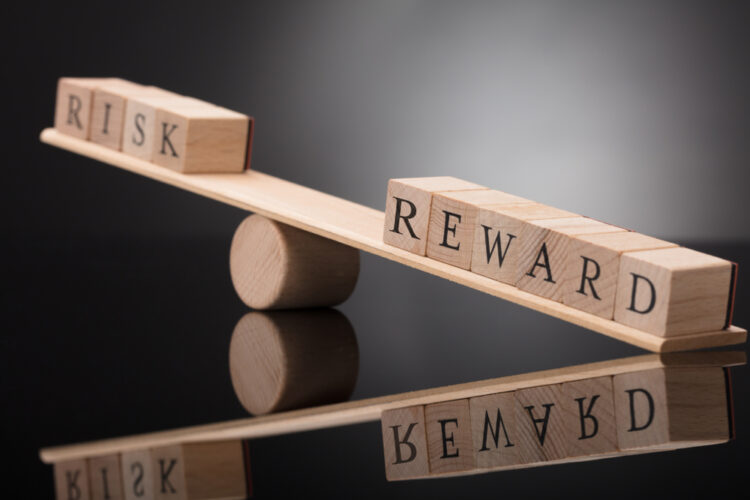Advertisement
Warren Buffet is a great investor he is known not only for his “golden judgment” when choosing investment portfolios but also for his super-strong mentality whenever the market fluctuates. When asked about the secret of success, he said that he has 2 golden rules: The first rule: Don’t lose money, and the second rule: Don’t forget the first rule.
To do this, investors need to choose a good investment portfolio, but an equally important factor that very few people mention or be overlooked is Risk Management.
In this article, Ecoinomic.io will help you better understand what is risk management. Why is it important? How to apply risk management in the crypto market?
What is Risk Management?
Risk management is the process of identifying, assessing, and controlling threats to an organization’s capital and income accounts. But risks can stem from many factors such as financial uncertainty, liability, technology problems, and errors in strategic management. From there, research measures to control and overcome the consequences of risks affecting business activities in order to optimally use resources.
Why Risk Management is important?
If an event occurs and you don’t anticipate it, causing your business to be affected, it may be just a negligible impact such as only a small impact on your costs. However, in the worst case, it can be catastrophic and cause serious effects, such as financial burdens or even having your business shut down.
To manage risk, an organization needs to apply resources to minimize risk, and monitor and control the impact of negative events while maximizing positive events. A consistent, systematic, and comprehensive approach to risk management can help identify, manage, and mitigate significant risks.

The role of risk management
- Help the organization operate stably
- Assist the organization in achieving its business goals, mission, and strategies
- Help risk managers make the right decisions
- Help enhance the position and reputation of the company and its managers
- Help improve safety in your organization’s operations
- Help companies successfully conduct high-risk business activities
Risk management in crypto
95% of new entrants to the cryptocurrency market lose money. The main reason behind this is poor risk management and control skills, which in turn leads to impulsive decisions. That’s why risk management in crypto is one of the most important aspects of cryptocurrency trading. The cryptocurrency market is growing at a rapid pace.
The Market Cap in 2020 was only 160 billion USD, as of June 2021 this figure has increased to 1.36 trillion USD. With such a strong development, more and more new investors are entering the market. Most people focus on profitability and forget that risk management is a very important factor. If you don’t want to burn out your money on the first day, then always remember the rules of risk management. The right investment strategy can help you both generate high returns while reducing the risk of risk.
To help you better understand the importance of risk management in the cryptocurrency market, here’s a simple example: You decided to invest in the crypto market and bought Ripple, a project that at the time of purchase was relatively strong and stable. Realizing the profit potential, you invested all your money in this project, however, unfortunately, the value of XRP (the coin representing Ripple) has decreased by up to 50% so you have lost half of your initial capital through only 1 single transaction.
Of course, this is a very special case even beginner traders rarely make such mistakes. But if you don’t have a risk management strategy and trade with emotion, you will definitely lose money.
How to avoid risks in the crypto market
- Do not put all your eggs in one basket. If in the example above you have invested 100% of your capital in Ripple. When something goes wrong and the value of Ripple drops by 50%, it means that the amount you spend is also reduced by up to 50%. However, if you invest in 10 different assets and Ripple only accounts for 10% of your entire funds, the losses you incur will be significantly reduced. Therefore, investors never ignore “risk diversification”. Always analyze the project, analyze the coin, and analyze the technical to find the right entry point and diversify the investment portfolio.
- Estimate the size of the investment. Investors are often driven by emotions rather than logical calculations. Even in the crypto market, there is a term to describe this phenomenon, it is called FOMO. Being driven by emotions makes investors’ behavior reckless.
For example, let’s say you’re sitting researching information on telegram or crypto news sites. Suddenly, you notice that many sources of information and groups are talking about MarkerDao, an Ethereum-based P2P organization that allows users to lend and Borrow cryptocurrencies, the main idea is that the coin of Ethereum (ETH) will rise sharply. Now you start researching the price of ETH and it is true that their price is rising very strongly. The thought in your mind at that time was that if you don’t buy now, you will miss the opportunity to make a profit. You decide to buy ETH despite its price rising sharply (even swinging). So you’ve been dominated by FOMO.
See also: What is FOMO? What does FUD mean? 4 ways to overcome FOMO and FUD when investing.

- Investing is based on principles, to avoid FOMO you need to make your own investment rules for your best friend and need to comply. New investors need to know the 6% and 2% principle. The 2% rule refers to the fact that investors should not risk more than 2% of the total amount on any transaction. The 6% rule states that if you continue to lose money in cryptocurrency trading and are unable to stop the unsuccessful trading chain, you should stop trading if you lose more than 6% of your deposit. In this case, you should pause trading for 1.5–2 weeks so that you can recover your mentality and stop making rash decisions. The above two principles are directly related to the capital loss limit. When you invest, make sure that the total risk for all orders does not exceed 25% it guarantees that even though your investments suffer losses you will still have at least 75% of the total assets.
- Determine the profitability of the investment. Remember that not all trades are profitable. Even professional investors can lose money. Losses are part of the investment, market participants need to accept it. Investors need to consider the profit/loss ratio. The ideal ratio is 3/1 or at least 2/1. On Binance exchange, technical analysis indicators are provided, making it easy to calculate, thereby forming an effective trading strategy.
For more: Instructions for registering an account and trading on Binance exchange
3 common mistakes new investors make
Learning from your mistakes is a great thing but at the same time, it will cost a lot to succeed. In this section, Ecoinomic.io will highlight 3 mistakes new traders make regularly so that you can take precautions and take appropriate risk management measures.
- When a trade is losing, investors will want to earn back the money they just lost in the fastest time. At this point, you are emotionally driven and prone to making rash decisions, causing the percentage of investors who continue to suffer losses to rise higher. Investors should never act in this way. Record what you’ve lost and don’t let greed blind you.
- Confidence is an important skill, but overconfidence is also not good, especially in the cryptocurrency market. It can be clearly seen that even experienced investors have times of loss. Some investors believe in the sustainable value of Bitcoin, they have spent up to 30%-40% of their total money investing in this coin. However, in a crypto market with unpredictable dynamics, instead of being completely confident in your predictions, you should build the right strategy and not risk a large investment.
- Another mistake that newbies often make is ignoring stop-loss and take-profit orders.
Example: You spend $1,900 to buy ETH coins. After doing technical analysis and trusting the price of this currency will rise. However, the crypto market is always complicated, so as a precaution, you can place a stop-loss at $1,600, which means that when the price of ETH goes down to 1,600 it will automatically sell (stop loss).Similarly, a take profit order is that you set a price of $2,200 which is the price you want to take profit at when the price of ETH rises to this level it will automatically sell for profit.
If you don’t know what take profit/stop loss is, check out the following article:
Read also: What is Take Profit and Stop Loss?
In fact, these operations are not complicated, it is important for investors to clearly remember that greed does not lead to good results. Predetermine the take profit or stop loss to close the position at the right time so that the best risk management can be achieved.
Conclusion:
Ecoinomic.io hope article: What is risk management? The application of risk management in crypto, has helped you better understand risk management, the importance, and ways to prevent risks so that you can build the right investment strategy. You need to keep in mind that you always have to balance 2 factors: potential profitability and risk management to have a sustainable development investment.
















